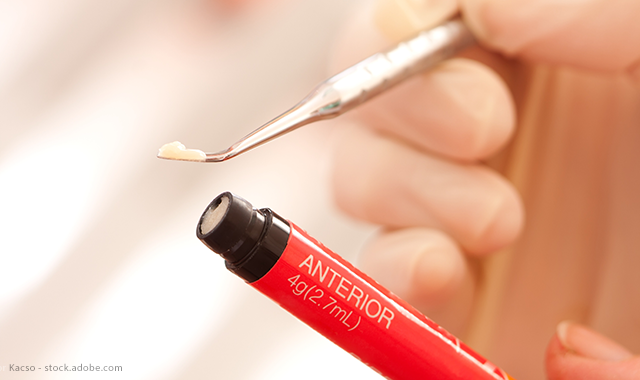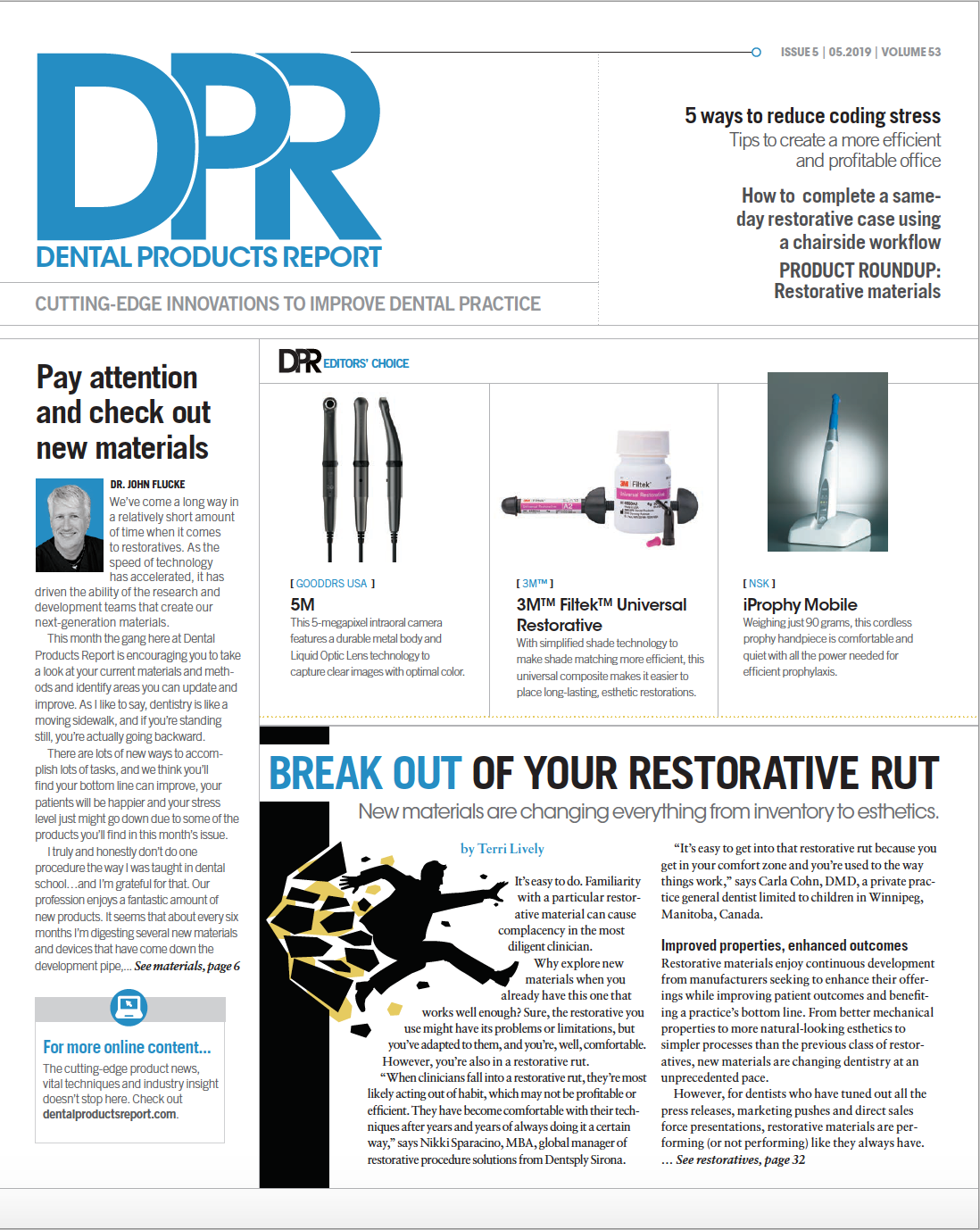Why dentists should take a fresh look at new restorative innovations
Materials are evolving at an incredible pace and changing the industry for the better.

We’ve come a long way in a relatively short amount of time when it comes to restoratives. As the speed of technology has accelerated, it has driven the ability of the research and development teams that create our next-generation materials.
This month the gang here at Dental Products Report is encouraging you to take a look at your current materials and methods and identify areas you can update and improve. As I like to say, dentistry is like a moving sidewalk, and if you’re standing still, you’re actually going backward.
There are lots of new ways to accomplish lots of tasks, and we think you’ll find your bottom line can improve, your patients will be happier and your stress level just might go down due to some of the products you’ll find in this month’s issue.
Related reading: The evolution of resin composites for direct restorations
I truly and honestly don’t do one procedure the way I was taught in dental school…and I’m grateful for that. Our profession enjoys a fantastic amount of new products. It seems that about every six months I’m digesting several new materials and devices that have come down the development pipe, threatening to disrupt how we practice-or at least to bring more opportunities for change.
Intraoral scanners continue to improve and become a greater part of what we do. We’re rapidly approaching the tipping point where scanners are mainstream. They’re already way past the realm of the early adopter.
Just as paperless was a goal a decade or so ago, offices are now starting to see the light at the end of the tunnel and at the other end is a world called “impressionless.” Imagine all your impressions and models stored in the cloud. How cool is that? The ability to scan and store patient models for future reference points and tracking of cases is a serious game changer.
Materials are also evolving at an incredible pace. Esthetic zirconia is now a reality and you know it’s only going to get better. Just a couple of years ago we really didn’t have esthetic options with the strengths we have today. Now, for anterior or serious cosmetic situations, the doctor has choices. And the best part of choices is that the benefits to the patients are enormous. Utilizing good preparation techniques and a good lab can provide results that were difficult or impossible to achieve a few short years ago.
Composites also continue to evolve. Last February Ultradent released Mosaic®, which was seven years in development. It’s an incredibly gorgeous and easy handling composite that can be used in a variety of clinical situations due to its incredibly strong shades. Then there’s the recent release of OMNICHROMA from Tokuyama.

This composite is designed to be a “one shade fits all” material that could allow an office to decrease its composite inventory to a single shade for many procedures.
Then we have an increasing number of reliable bulk fill composites. Whether they’re dual-cured systems such as Coltene’s Fill-Up!™ and Danville’s Bulk EZ™, or total advanced light-cured systems such as KaVo Kerr’s SonicFill™ 3, dentists now have options for those procedures where time is of the essence.
And while I’m legally restricted from divulging anything now, trust me when I tell you that there are some incredible things on the horizon that will give us even more to be excited about.
We’re also seeing the continuing expansion of the “biorestoratives.” These materials promise to help create and stimulate the growth of reparative dentin while decreasing the incidence of sensitivity. Some can even mimic tooth structure to help with repairs in the furcation or in endodontic perforations. Bases and liners such as TheraCal LC® from BISCO, Ultra-Blend® plus from Ultradent and VOCO’s Calcimol LC are light-cured, bioactive materials that stimulate healing in the dentin and pulp for indirect pulp capping procedures.
More from the author: Using technology for better esthetic outcomes
Then there’s Ceramir from Doxa Dental, a cement for indirect restorations that’s a “nanostructurally integrating bioceramic.” It’s a biocompatible dental luting agent that integrates with natural tooth structure and exhibits tooth-like physical and mechanical properties.
Combine these cutting-edge technologies with better bond strengths, CBCT systems and the expanding realm of dental sleep medicine and I think you’ll agree that there are plenty of things working to change our profession for the better. My job as “Dentistry’s Technology Evangelist” is a fun one for me. When you get a chance to see, explore and then inform the profession about the latest and greatest game changers, it’s hard to not get excited about all of the progress being made in our profession. So, sit back and enjoy what we’ve put together for you this month. I’m confident you’ll find a few things in this issue that you’ll want to evaluate for yourself. I’m also confident a few of these will change your and your patient’s lives for the better.
Oh, and my new podcast, “Technology Evangelist,” is coming soon. Be sure to look for it!

ACTIVA BioACTIVE Bulk Flow Marks Pulpdent’s First Major Product Release in 4 Years
December 12th 2024Next-generation bulk-fill dental restorative raises the standard of care for bulk-fill procedures by providing natural remineralization support, while also overcoming current bulk-fill limitations.